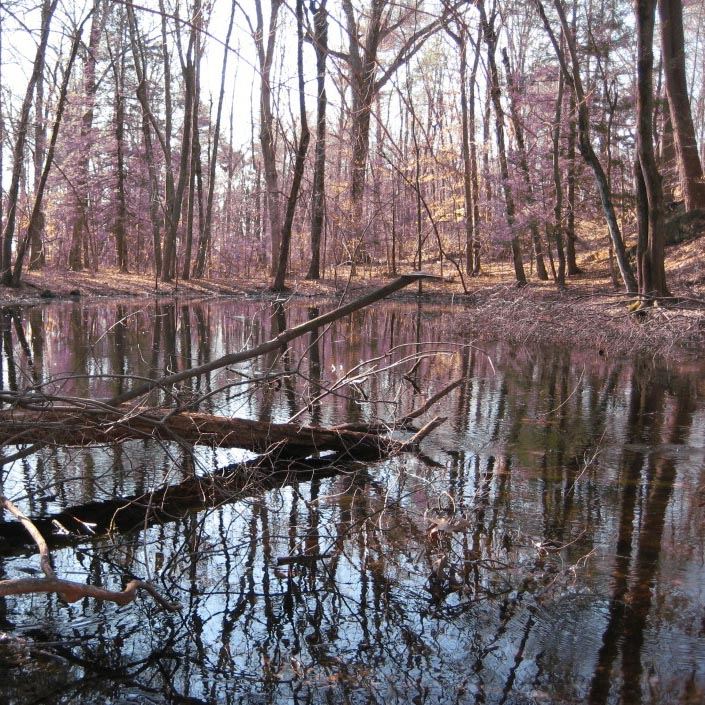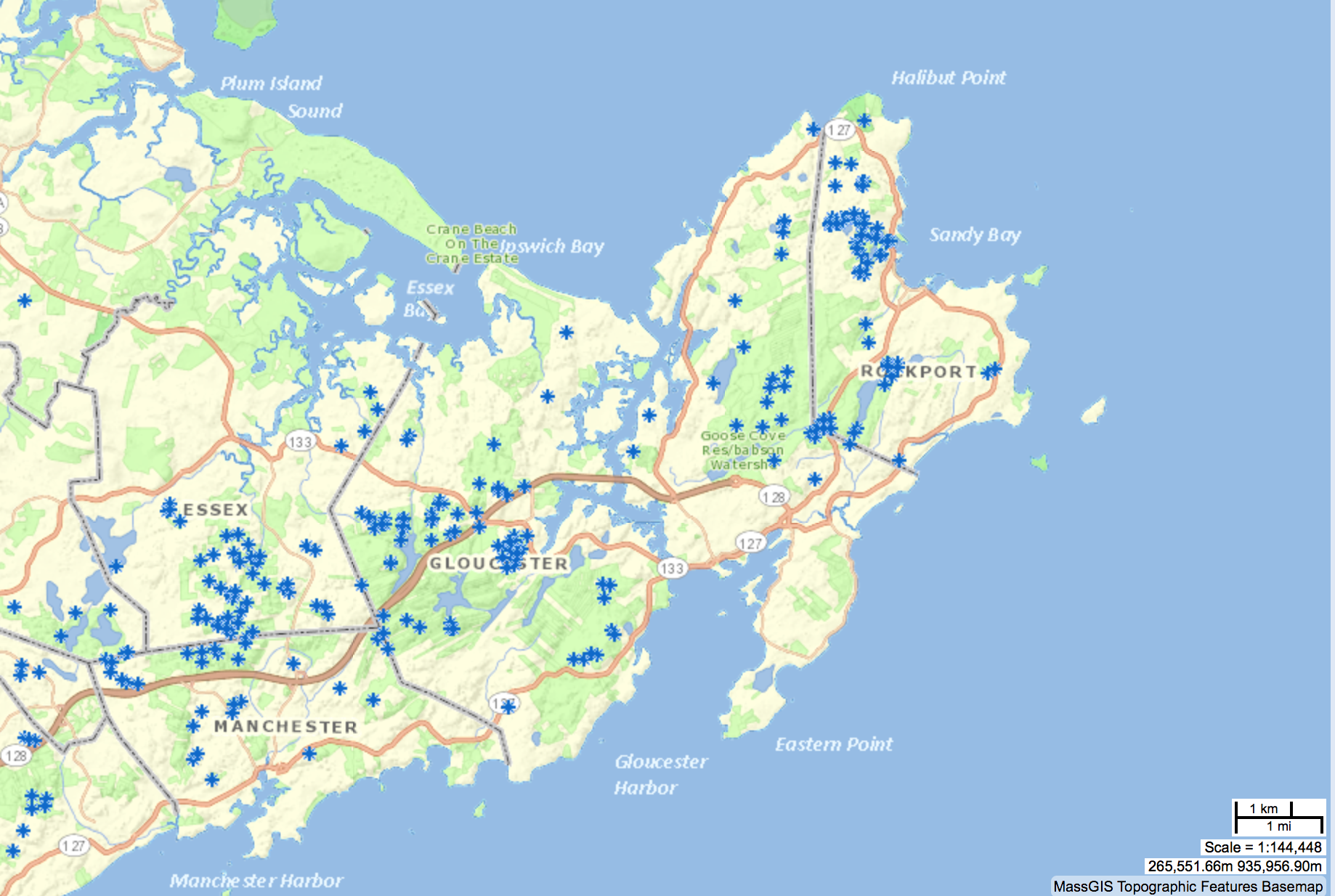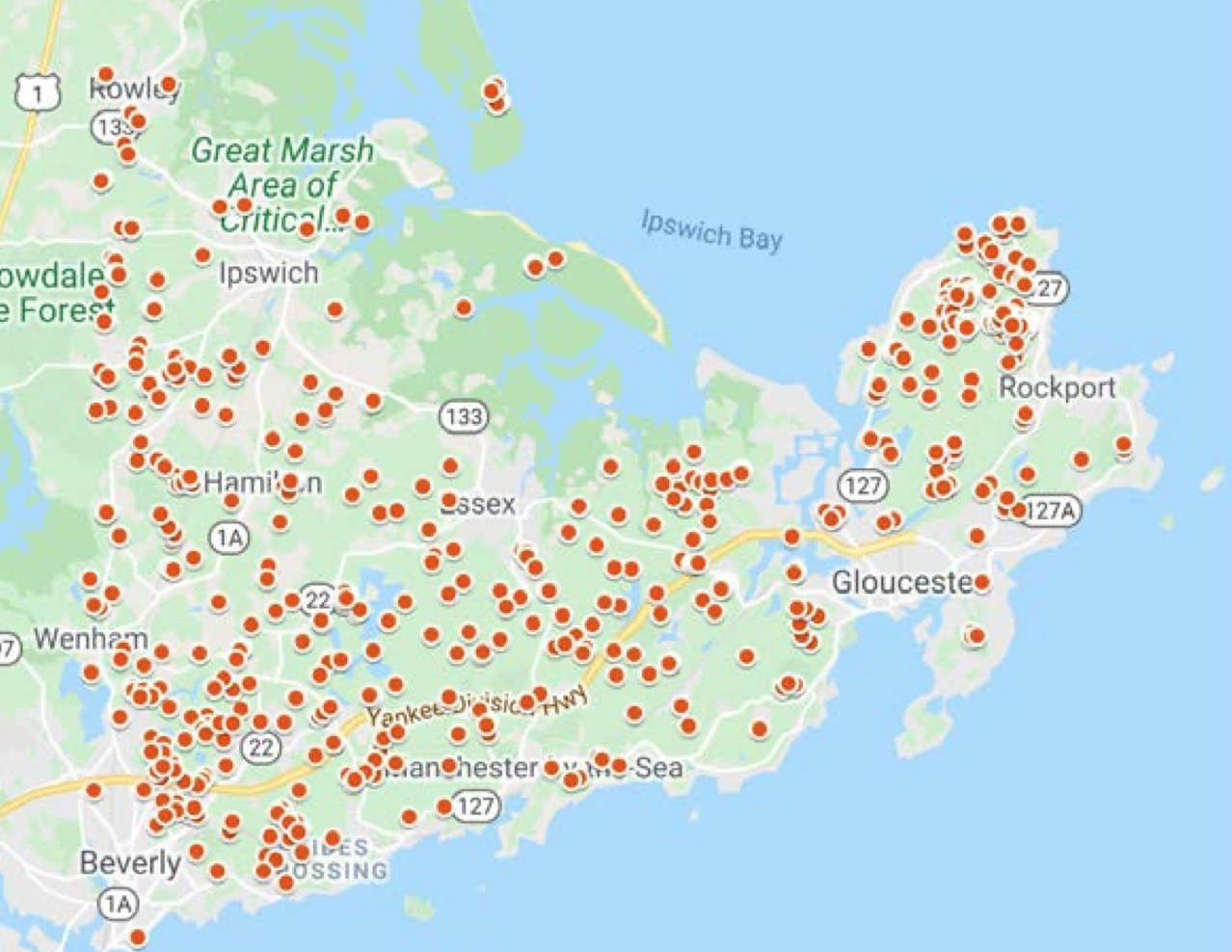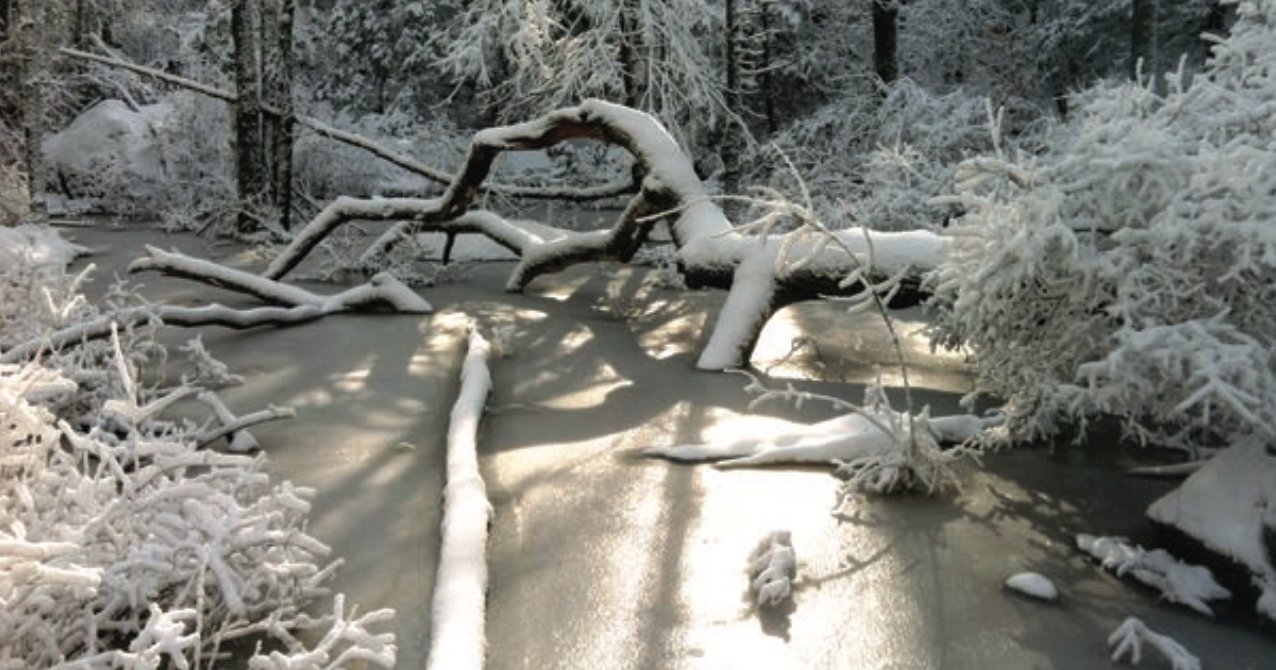- HOME
- Vernal Ponds
Cape Ann Vernal Pond TeamVernal Ponds, Discovering Vernal Ponds, and Vernal Pond Certification Reporting Process |
Vernal PondsVernal ponds are also known as vernal pools and spring pools. They are confined basin depressions with no permanent inlet or outlet; small, shallow, freshwater, temporary fishless wetlands that have a unique ecology. Vernal ponds provide more food for forest wildlife than any other type of wetland. As vital pieces of the larger forest ecosystem, vernal ponds are critical wetland habitat for countless species.Vernal pools host many species of animals, some of which are obligate species -- they require vernal ponds for their survival. The spotted salamander, blue-spotted salamander, Jefferson salamander, marbled salamander, wood frog and fairy shrimp are obligate species in Massachusetts. On Cape Ann we are the home to just three of these obligate species - spotted salamanders, wood frogs and fairy shrimp. In our home area the breeding activity by either the spotted salamander or the wood frog, or the presence of fairy shrimp, is evidence of a vernal pool. In the spring, wood frogs and salamanders migrate to the ponds to breed. Most of them will return to the same pond every year, and if the pond has been destroyed or disturbed, that specific population will cease to breed. In addition to the species that depend on the specific ponds for survival, there are numerous other invertebrates, amphibians, reptiles, birds, and mammals that depend on vernal ponds for food. Because vernal ponds are often small pools of water that dry up in the summer, their significance is sometimes passed over. There are hundreds of vernal ponds on Cape Ann. If you are interested in learning more about our local vernal pools, join us for one of our daytime or nighttime field trips. To learn more check out Vernal Pond Field Trips on the About Our Activities page. If you're a woodland dog walker read our Dear Fellow Dog Owners recommendations page. | Hop on over and learn about our new... Vernal Ponds Definition: Learn more about vernal ponds from the Mass Wildlife's Natural Heritage & Endangered Species Program vernal pools page.
|
OLIVER to the Rescue by Adam Bolonsky |
When the team first began identifying Cape Ann vernal pools in the early 1990s in Rockport, Gloucester, Manchester, and Essex, we relied almost exclusively on local knowledge. If you were a woodsy, outdoorsy Cape Ann landowner, say, you’d probably noticed there were vernal pools on your property. And if you knew Rick Roth, you’d let him know about them. |
Vernal Pond CERTIFICATION Reporting PROCESS
Data is collected in the field for the pools we are working to certify. Vernal pond surveys include photos of the pond (full of water in the spring), evidence of obligate species - usually wood frog or spotted salamander egg masses, and a description of the pool; length, width, depth and location - GPS coordinates. Field work is completed by our Team.
Certification information is entered by our Team into the database of the Vernal Pool & Rare Species (VPRS) Information System maintained by the Natural Heritage & Endangered Species Program (NHESP). NHESP is part of the Massachusetts Division of Fisheries and Wildlife. NHESP's overall goal is the protection of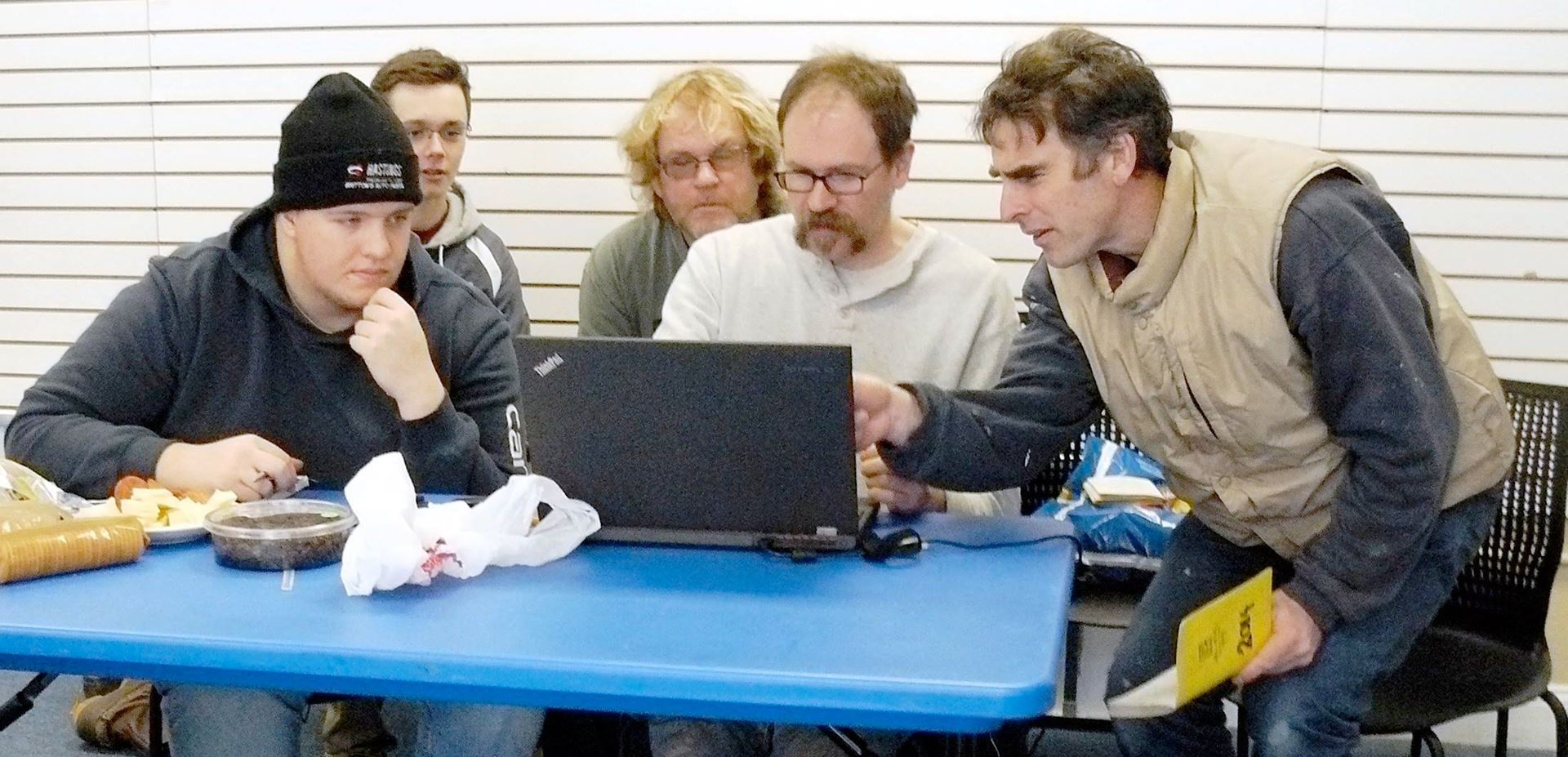 the state's wide range of native biological diversity using six methods - three of which CAVPT accomplishes through field surveys, land protection, and education.
the state's wide range of native biological diversity using six methods - three of which CAVPT accomplishes through field surveys, land protection, and education.
The window of opportunity to collect the necessary data to certify pools is short. Evidence is documented most easily in the spring when amphibian egg masses such as wood frog and spotted salamander are in the pools. This time can be a matter of 3-4 weeks. This is why it is important to have trained volunteers and a good strategy when locating and surveying vernal pools. We often get notified about pools from volunteers and citizens who lead us to some of their favorites. Some pools are found using maps generated by Dan Wells.
If you know of a vernal pool please Contact us.
Vernal Pond Certification Map of Cape Ann
Salamander drawing by Ollie Balf
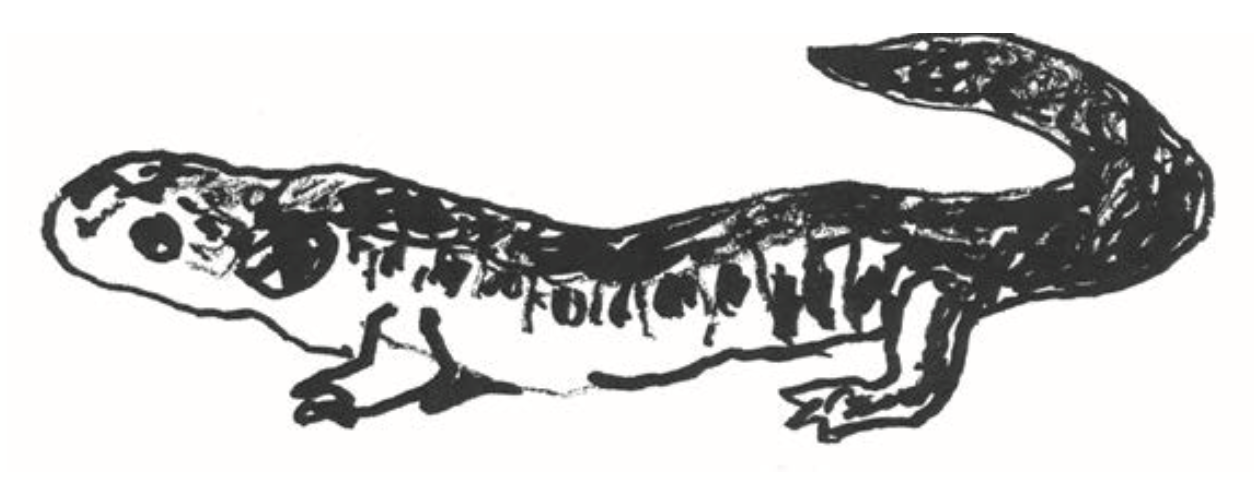
Cape Ann Vernal Pond Team * P.O. Box 39 * Gloucester, MA 01931 |

